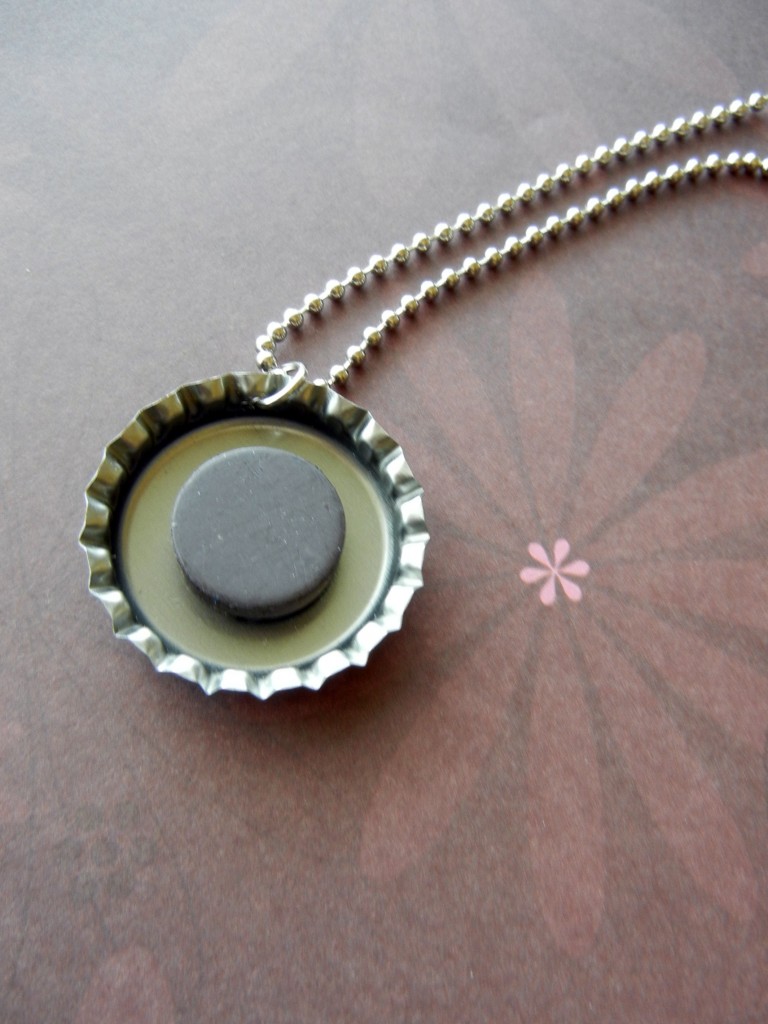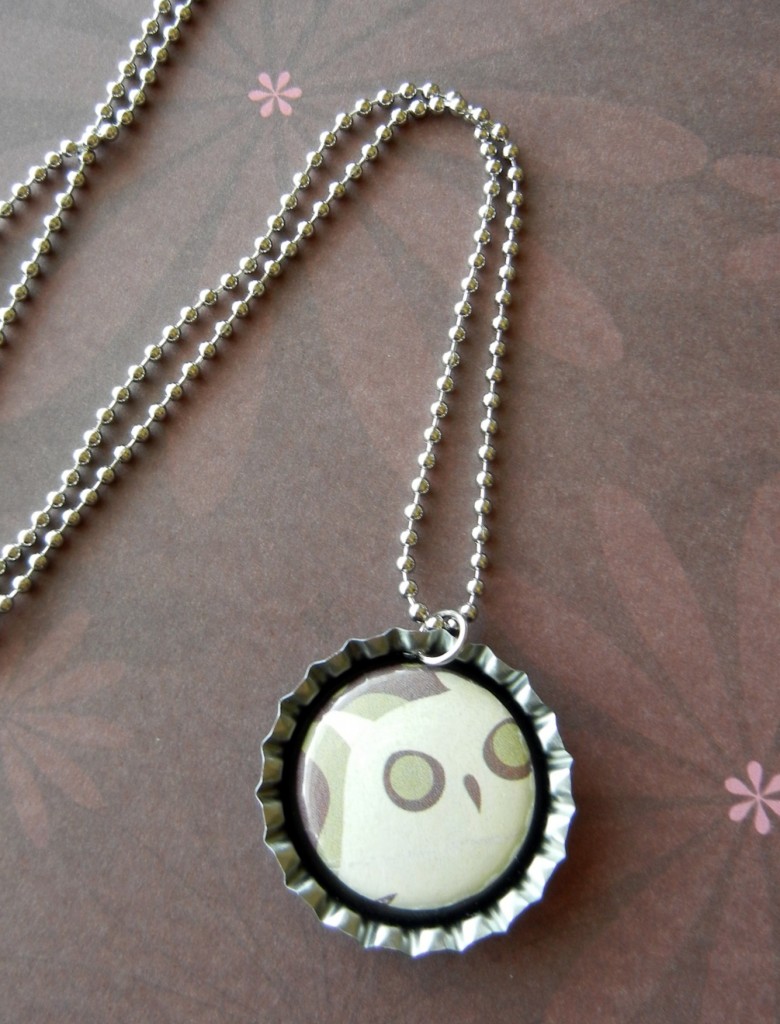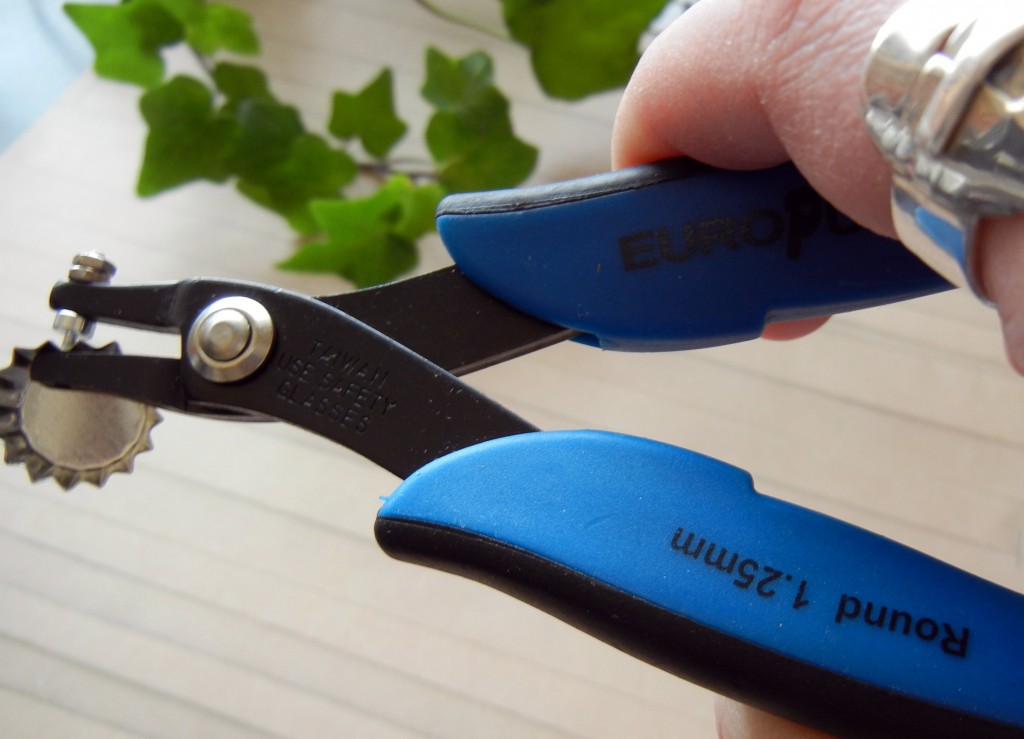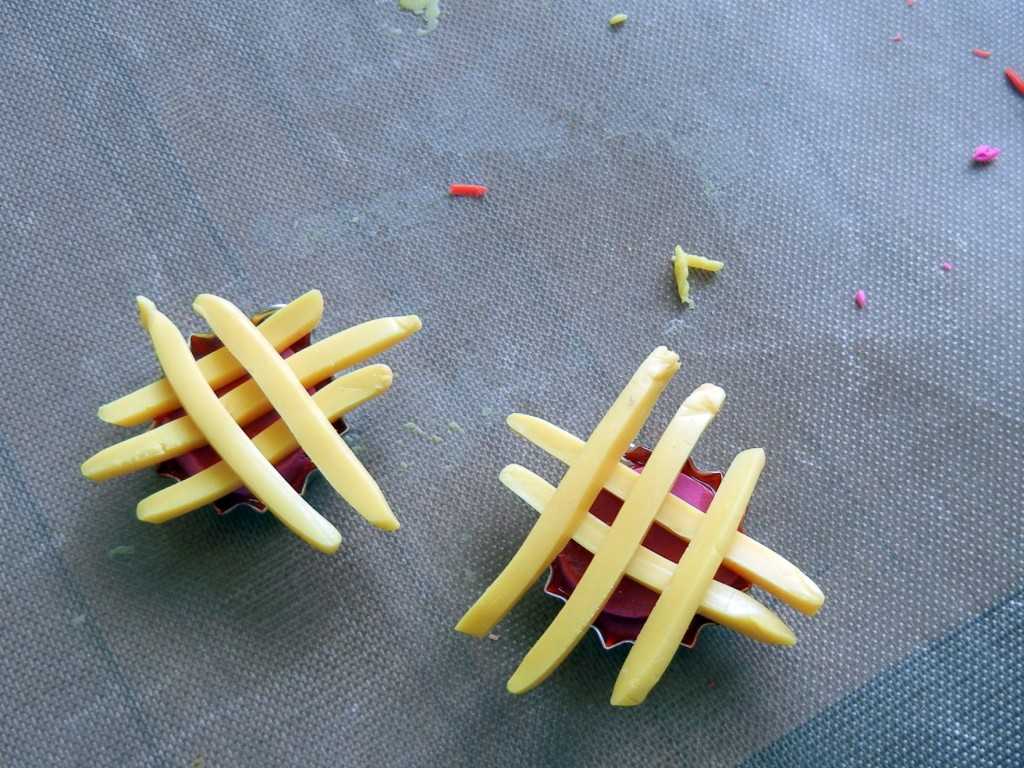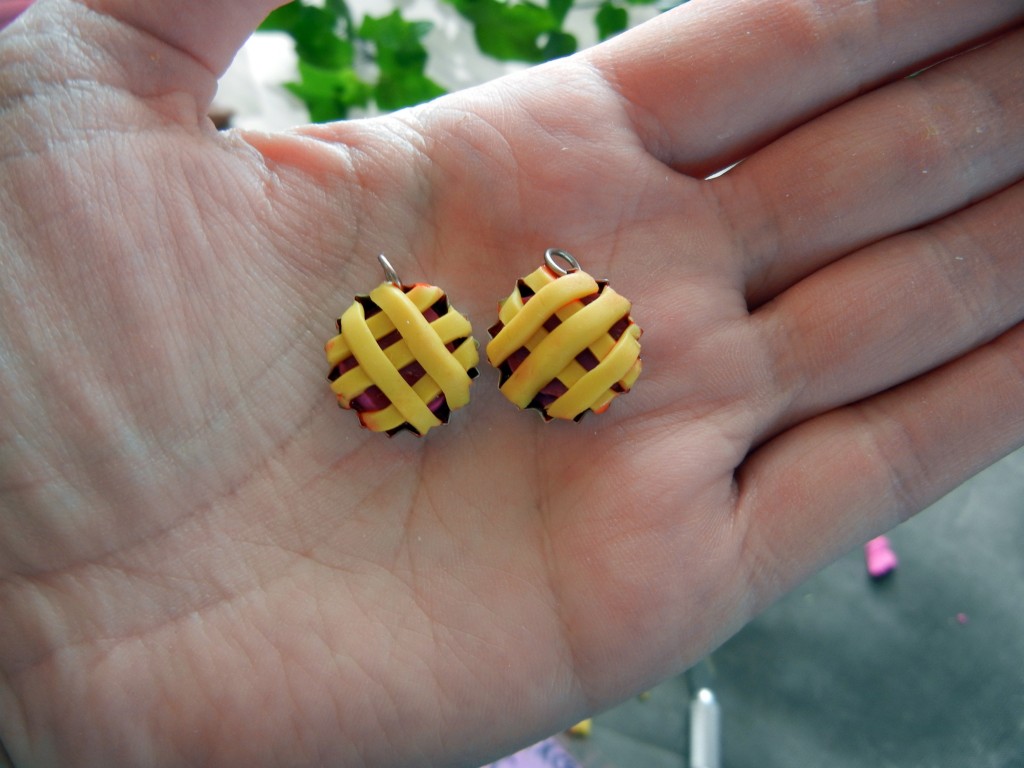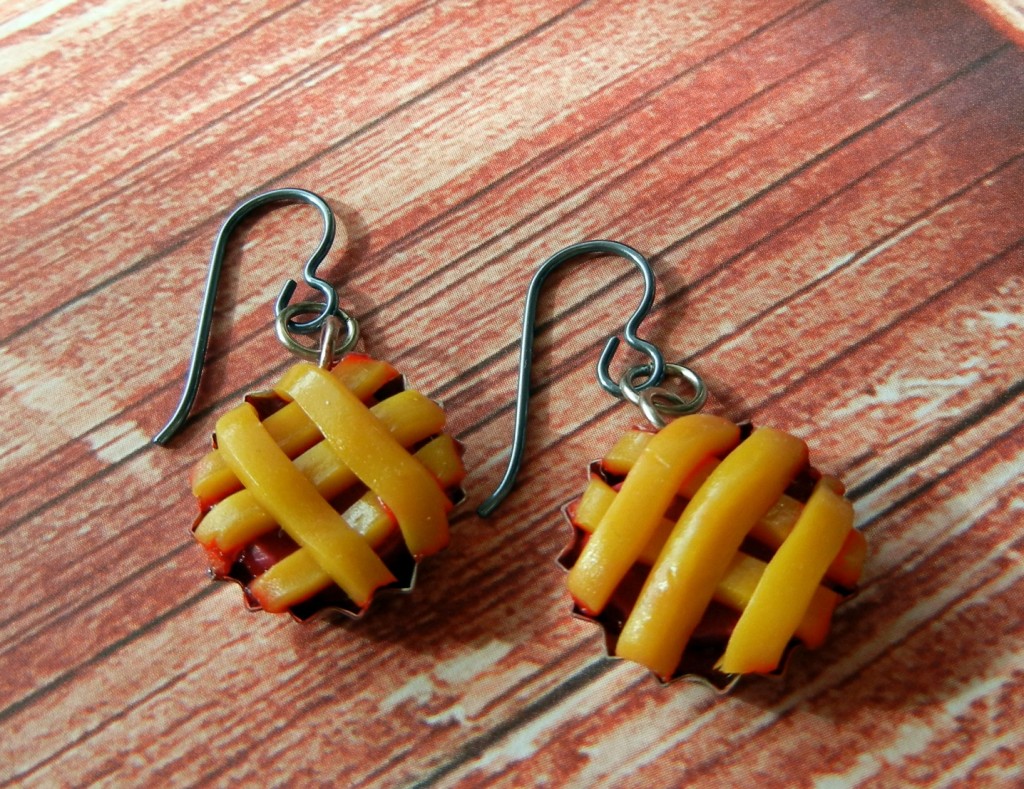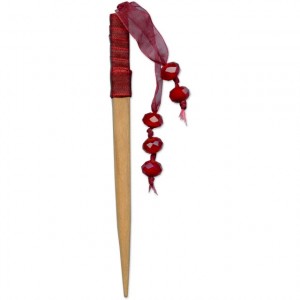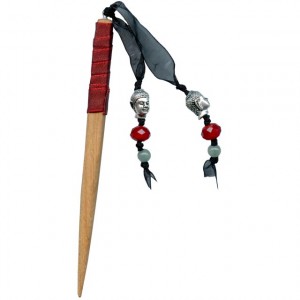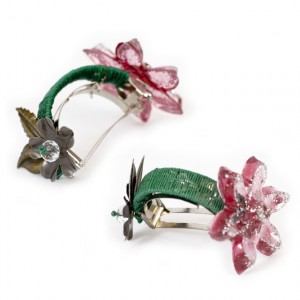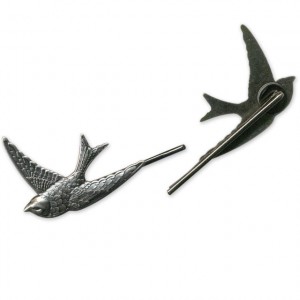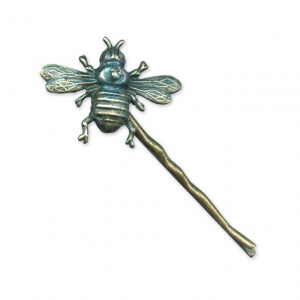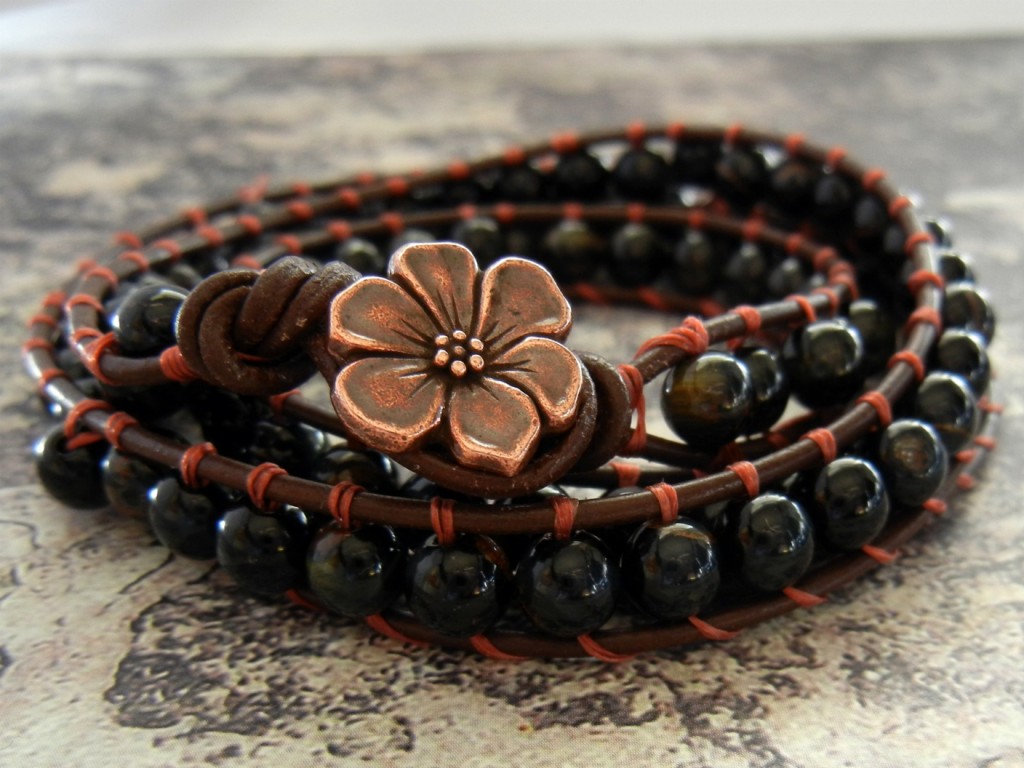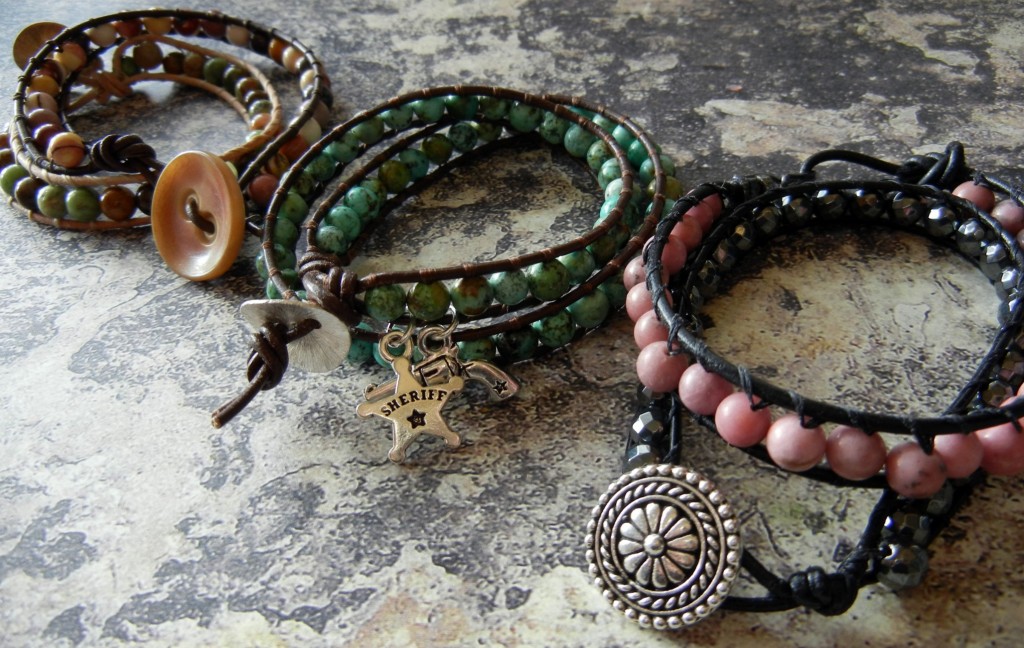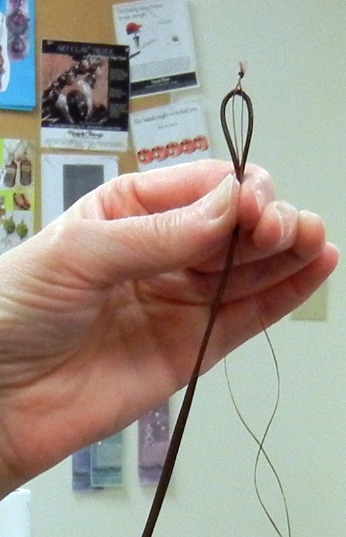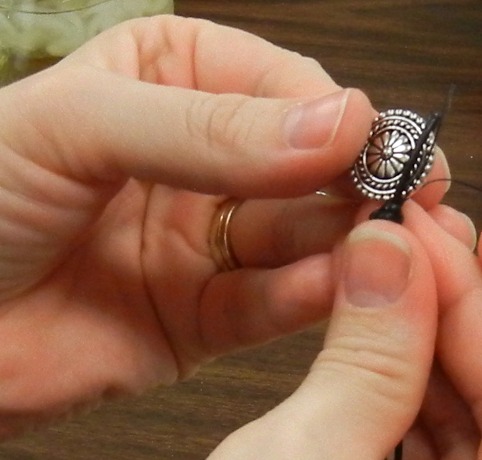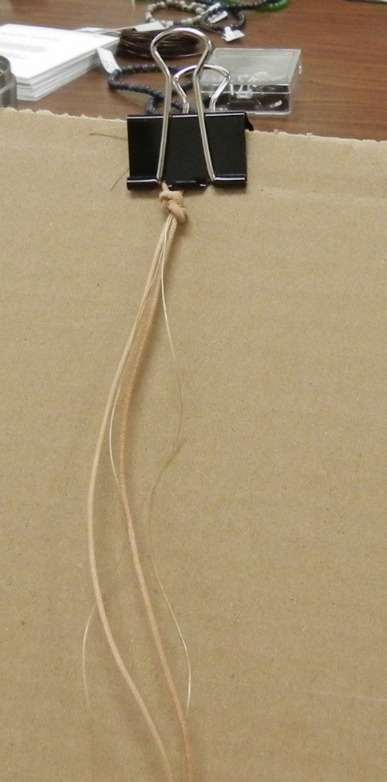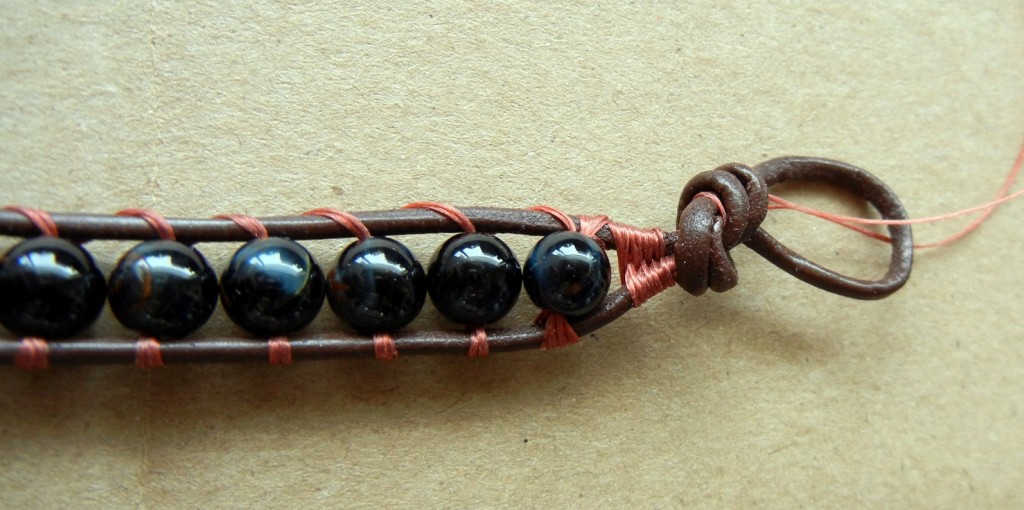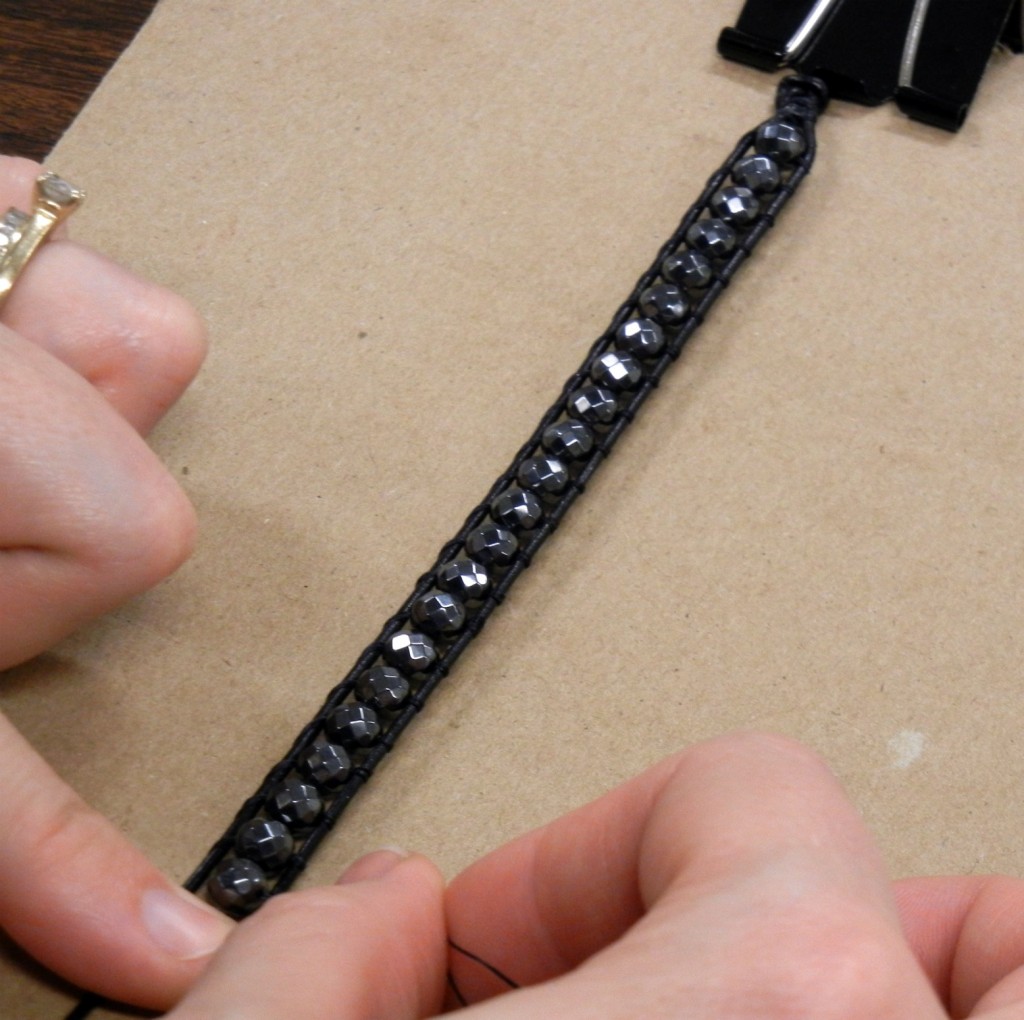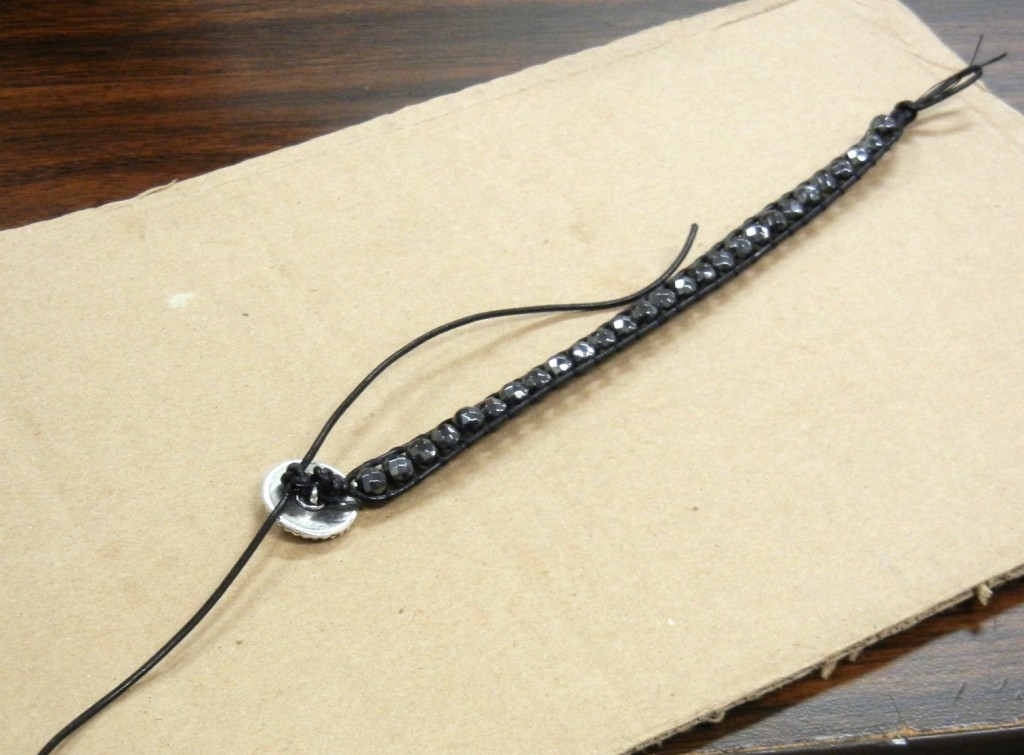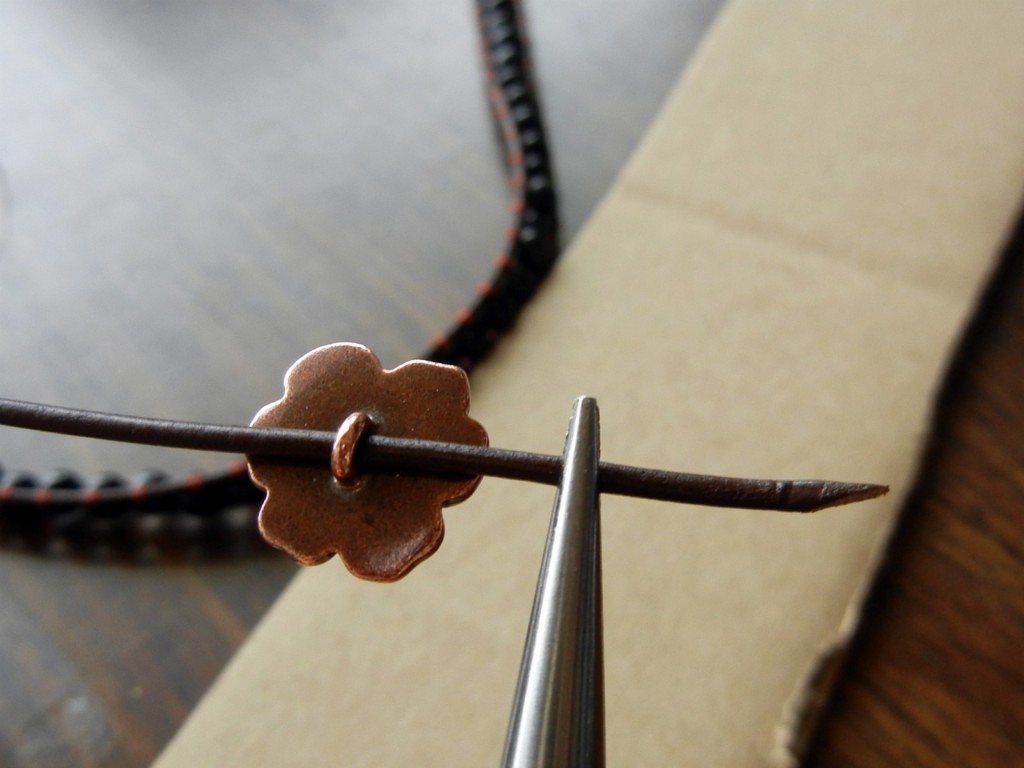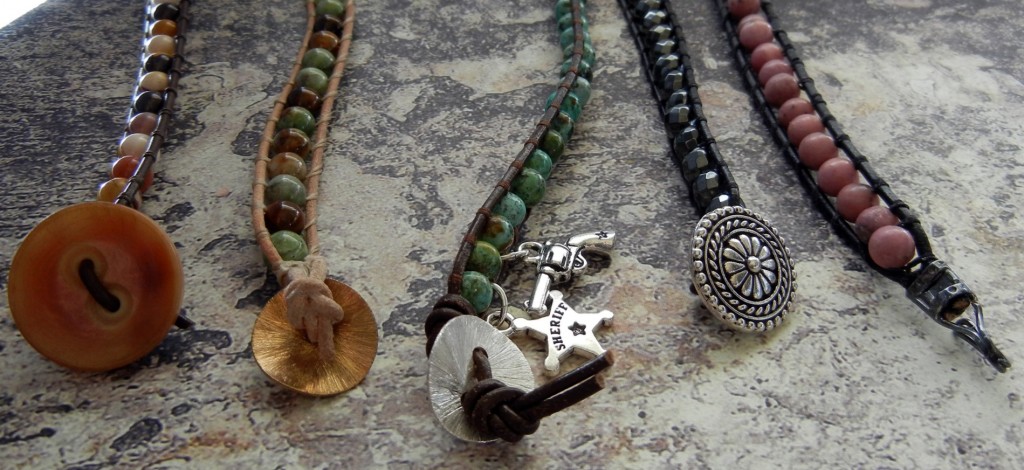 Handmade magnetic bottle cap necklace with assorted buttons
Handmade magnetic bottle cap necklace with assorted buttons
Mollie has been borderline obsessed with one particular item lately. It’s not a pretty gemstone bead or sparkly crystal pendant. It isn’t even new. No, Mollie is obsessed with plain old sticky dots. Almost daily, she’d ask me, “Oooh, have you tried the sticky dot?” and I’d just roll my eyes. But now I’m a convert too.
Sticky dots are just that – self-stick little glue pads. Easy to use, strong, zero mess, no fuss, no cure time, no smell. This is true instant gratification!

Round sticky dots fit perfectly under our magnets!
Two of Mollie’s recent designs use the sticky dot: the interchangeable magnet ring and the interchangeable magnet bottle cap pendant. Like many of you crafty people, Mollie has a button making machine. The little 1″ buttons are particularly adorable, and since they are made of steel, naturally they are magnetic. I don’t have a button machine myself, but I buy lots of buttons – and now I can wear them instead of leaving them on my bulletin board!
Rings & Things’ wholesale price breaks makes it really affordable to make a whole bunch of these necklaces. For about $50 (before shipping and tax, if applicable) you can get everything (except the buttons) to make 70 necklaces – with supplies leftover! If you don’t already have one, add a pair of EuroPunch pliers to make holes in the caps.
1 spool of ball chain (makes 70 17″ necklaces) $18-25 ~ 100 ball chain clasps $2 ~ 1 oz. jump rings $5-6 ~ 100 bottle caps $7-10 ~ 144 adhesive dots $6 ~ two packs of 35 magnets $12-14
The adhesive dot is completely hidden by the ring and magnet.
The same value applies to the magnetic ring design – and absolutely no tools are required to make these!
72 adjustable flat-pad ring blanks $42-62, depending on color (we do sell a less expensive ring blank if you prefer, but the style and comfort of this style is worth the added cost) ~ 144 adhesive dots $6 ~ two packs of 35 magnets $12-14
At these quantities, the necklaces cost less than a dollar and the rings about $1.20 to 1.50 each to make. Buy more and the cost per is even lower. Ah, the genius of good design! ~ Cindy
“Make everything as simple as possible, but not simpler.”
~ Albert Einstein
PS: here are some handy links to some other how-to’s in the Rings & Things blog!

